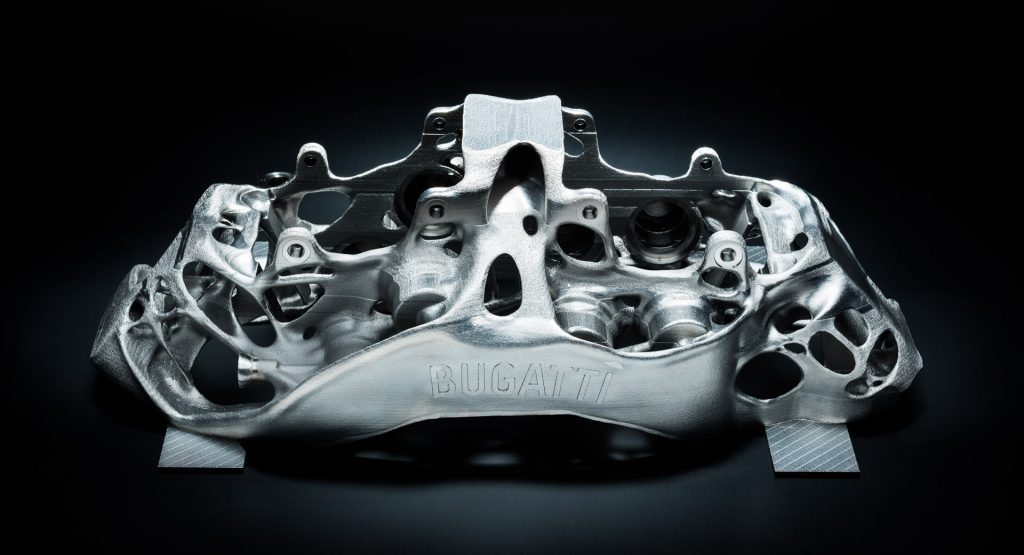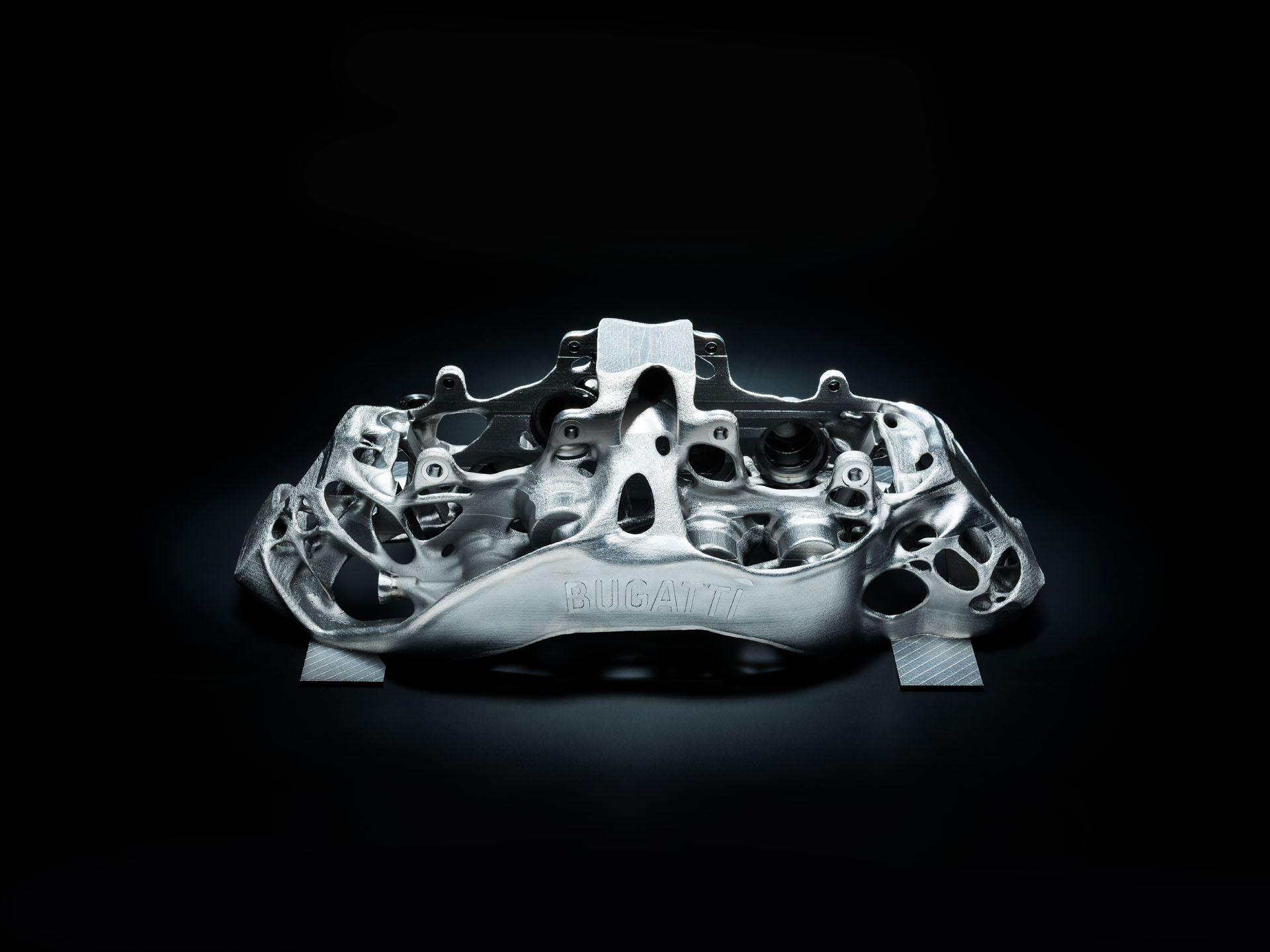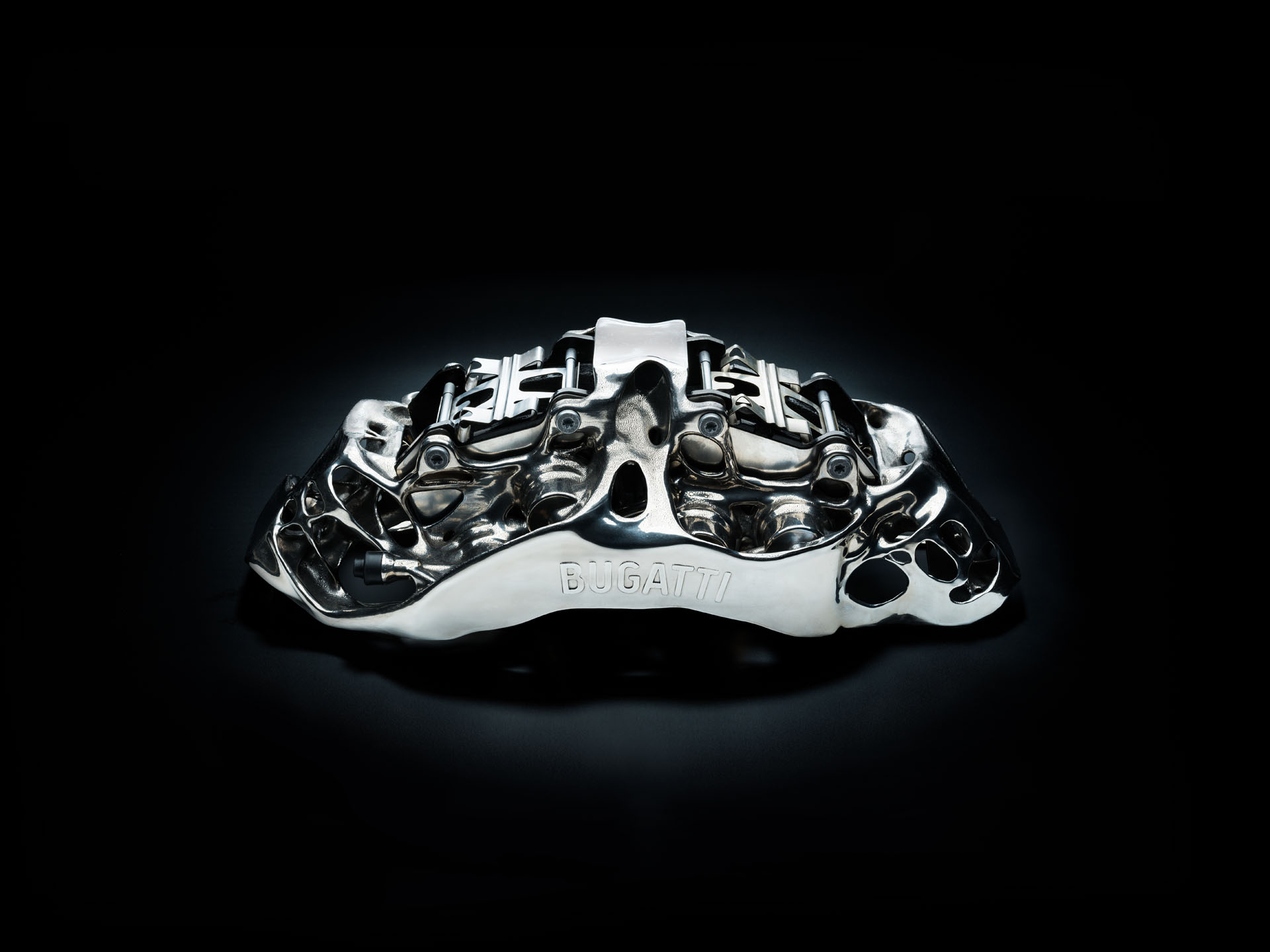There’s virtually no end to the impressive stats surrounding the Bugatti Chiron. The brakes may seem the least of them, but make no mistake about it: they stand in and of themselves as a technological tour de force.
The brakes fitted to the hypercar are already the largest in the industry, crafted from a high-strength aluminum alloy with eight pistons at the front and six at the rear. But the Alsatian automaker isn’t satisfied with leaving “well enough” alone.
In a further development, Bugatti has now redesigned the brake calipers to be 3D printed out of titanium. Though still being evaluated for production, they already stand as the largest functional 3D-printed titanium component in the world.
The benefits are clear: while the aluminum calipers already in place on the Chiron weigh 10.8 pounds, the 3D-printed titanium version weighs just 6.4 lbs. That’s pretty impressive considering how big they are – measuring 16 inches long, 8.2 inches wide, and 5.3 inches high.
“Vehicle development is a never-ending process. This is particularly true at Bugatti,” says Frank Götzke, Head of New Technologies in Bugatti’s Technical Development Department. “In our continuing development efforts, we are always considering how new materials and processes can be used to make our current model even better and how future vehicles of our brand could be designed.”
It took Bugatti and Laser Zentrum Nord (with which it collaborated on the project) just three months to develop the titanium components. Each piece takes 45 hours to print using the largest machine of its kind in the world, with four lasers setting down 2,213 layers in each piece.
The automaker is preparing to begin testing the 3D-printed titanium calipers in the coming months with an eye towards putting them into production – either on the current Chiron, or potentially on an upgraded version. (Can you say Super Sport?) The brakes aren’t the only components being evaluated, though: it’s also working on a windscreen wiper similarly printed at half the weight of the existing aluminum version.







